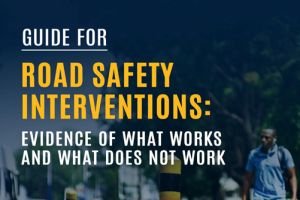Guide for Determining Readiness for Speed Cameras and Other Automated Enforcement

Overview
Guide for Determining Readiness for Speed Cameras and Other Automated Enforcement
This guide has been prepared to assist a jurisdiction to determine the level of readiness to move to automated enforcement (AE). Speed cameras enforcing speed limits are a common application of AE and there are many systemic legal and operational elements that must be in place before AE can be effective. For example, an accurate image of a speeding vehicle, in the absence of robust driver licensing and vehicle registration systems, is of little road safety value. Importantly, automated speed enforcement should be considered as one part of a comprehensive speed management approach that includes road infrastructure and roadside policing as well. The management of speed is a fundamental element of the Safe System.
Aims of this document:
-
To briefly identify the powerful practical value of AE in saving lives and reducing injuries.
-
To identify issues and criteria to be considered before commencing automated enforcement. To identify steps to be taken to achieve readiness for automated enforcement. To identify issues to improve existing automated enforcement systems.
-
To provide a checklist to ensure adequate consideration is given to issues to assess readiness to implement an AE system or improve an existing system.
Other illegal behaviours, including disobeying a red light signal, mobile or cellular phone use, incorrect lane use, and non-restraint use can also be detected using an automated enforcement approach. However, this document applies specifically to automated speed enforcement, because speed management requires significant attention worldwide and plays a critical role in reducing road traffic deaths and injuries.
Document also available in French, Portuguese, Vietnamese and Spanish.
Guide Details
Guide for Determining Readiness for Speed Cameras and Other Automated Enforcement
Did you know?
82% of Road Crash Fatalities and Injuries in the economically productive age groups (15 - 64 years.)
82% of Road Crash Fatalities and Injuries in the economically productive age groups (15 - 64 years.)


